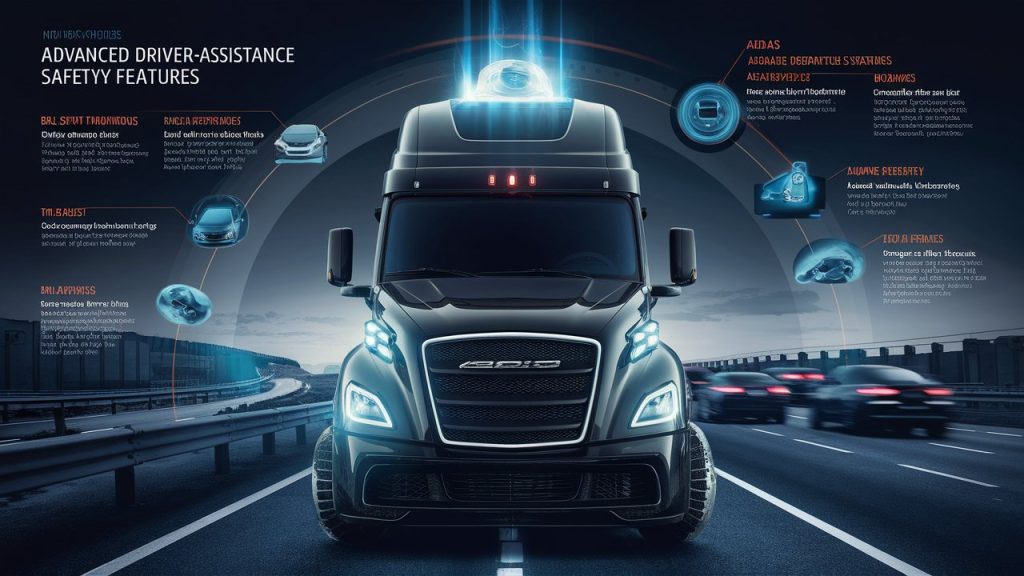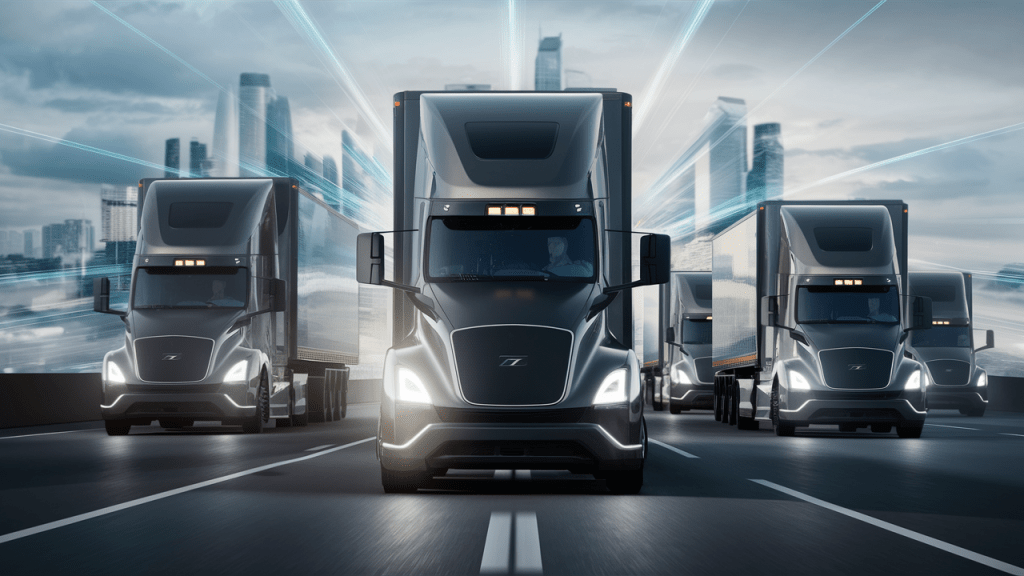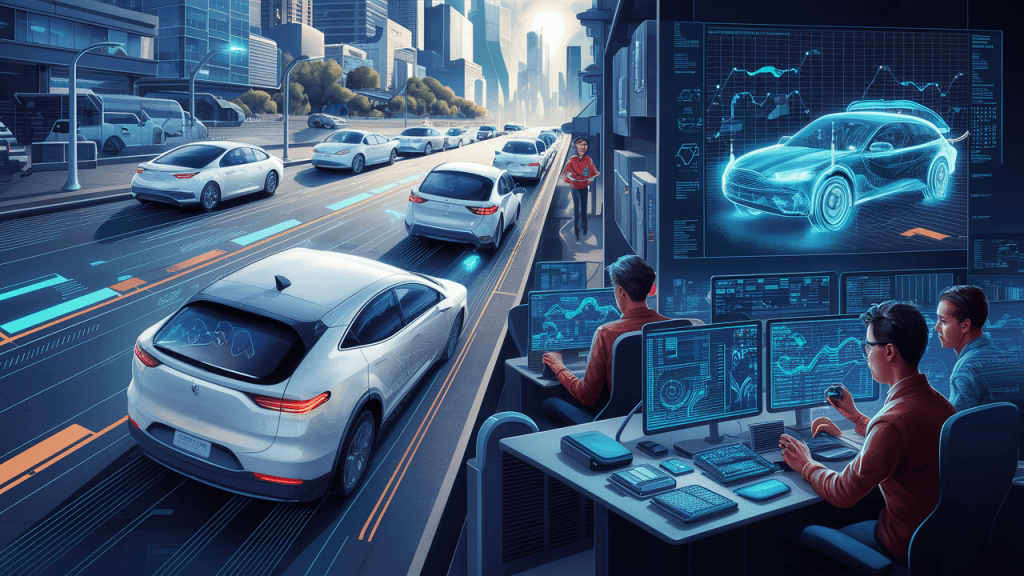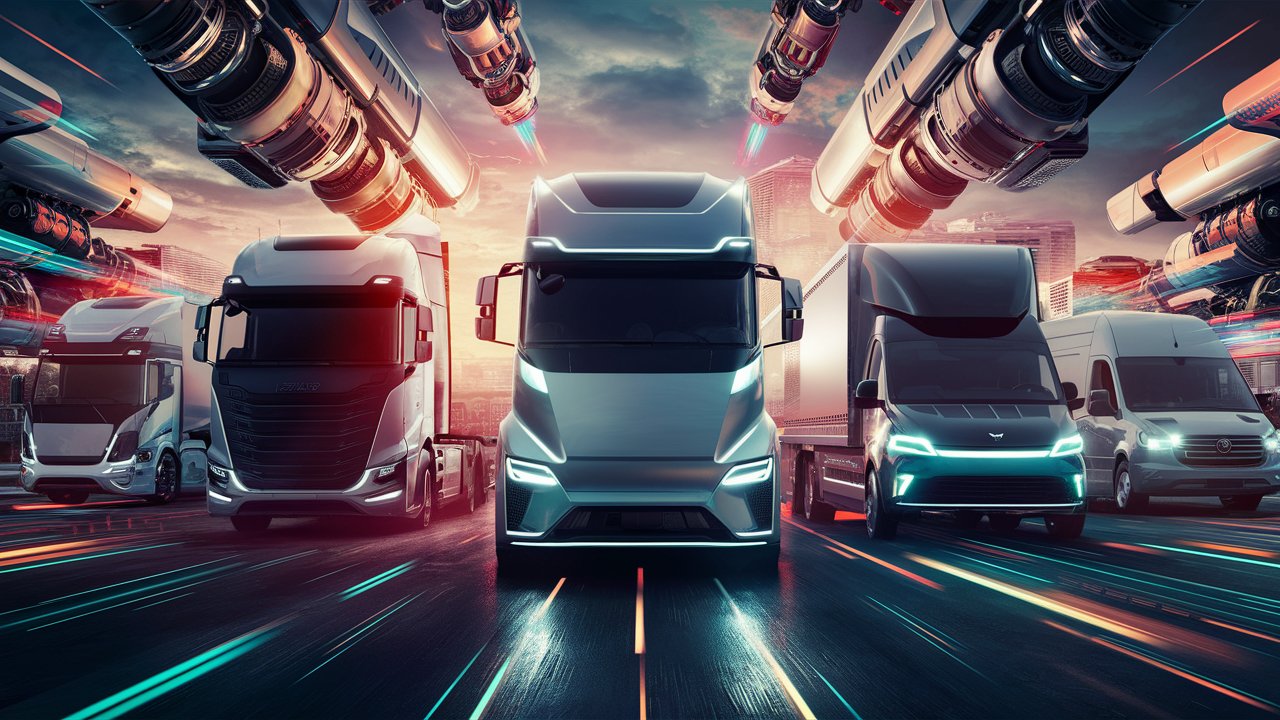Table of Contents
The rumble of engines and the whir of gears have long been the soundtrack of commerce. But beneath the familiar roar, a revolution is brewing. Commercial vehicle technology is rapidly transforming the world of trucks, buses, and vans, promising a future that’s safer, cleaner, and more efficient. Hold on, as we are going to explore the exciting world of these advancements.
Safety First:
A Top Gear Shift

Keeping our roads safe is paramount. Commercial vehicle technology is making significant strides in this area. Advanced Driver-Assistance Systems (ADAS) are like having a co-pilot, with features like lane departure warnings, automatic emergency braking, and blind-spot monitoring acting as extra sets of eyes. These systems can prevent accidents, saving lives and reducing costs.
Imagine a world where fatigue is no longer a threat. Driver drowsiness detection systems monitor a driver’s behavior and issue alerts when fatigue sets in, prompting them to take a break. Additionally, collision avoidance systems use radar and cameras to detect potential hazards. It automatically takes corrective action, preventing disastrous crashes.
Going Green:
Shifting Gears for Sustainability
The environmental impact of commercial vehicles is a major concern. The good news? Technology is making the routes clear for a green future. Hybrid and electric vehicles are no longer a futuristic fantasy. Regular gas engines work with electric motors in hybrid trucks. This helps them get better gas mileage and pollute less. Electric vehicles, powered solely by electricity, are becoming increasingly viable for short-haul deliveries, producing zero tailpipe emissions.
But the green revolution goes beyond just the powertrain. Aerodynamic advancements are making vehicles sleeker, reducing wind resistance, and improving fuel economy. Lightweight materials are being incorporated to shed pounds, further enhancing efficiency. Additionally, telematics systems provide real-time data on fuel consumption and route optimization, helping fleet managers streamline operations and minimize fuel waste. See You Transportation.
The Power of Data:

Shifting Gears for Efficiency
Data is the new oil in the transportation industry. Telematics systems collect a wealth of information from onboard sensors, including location, engine performance, and driver behavior. This data goldmine empowers fleet managers to optimize routes, identify maintenance needs before breakdowns occur, and even improve driver training based on real-world driving habits.
The benefits extend beyond the fleet itself. Traffic management systems use data from commercial vehicles to understand traffic patterns and congestion in real time. This allows for dynamic adjustments to traffic lights and routing recommendations, leading to smoother journeys for everyone.
The Driverless Revolution:
Shifting Gears for Autonomy
The prospect of self-driving trucks may seem like science fiction, but it’s a reality on the horizon. Autonomous vehicles use a combination of cameras, LiDAR (Light Detection and Ranging), and radar to navigate their environment. While fully autonomous trucks may still be some time away, advancements like lane-keeping assist and automated highway driving systems are already paving the way for a future where long-haul journeys can be completed with minimal driver intervention.
The Human Factor:

Shifting Gears for Collaboration
Even though machines are doing more and more things, humans are still important.. Commercial vehicle technology is not meant to replace drivers, but rather to augment their capabilities. Advanced systems can handle mundane tasks, allowing drivers to focus on complex decisions and unforeseen situations. This collaborative approach fosters a safer and more efficient transportation ecosystem.
Challenges facing commercial vehicle technology
While advancements are significant, challenges remain such as
- Refining autonomous vehicle technology for complex environments
- Ensuring cybersecurity for connected vehicles
- developing a robust infrastructure for electric vehicle charging
These challenges require ongoing attention.
Final Thought:
The world of commercial vehicle technology is a dynamic one. It is constantly evolving and pushing boundaries. From safety advancements to environmental initiatives, and data-driven optimization to the promise of autonomy, these innovations are poised to revolutionize the way we move goods. While challenges remain, the future of commercial vehicles is bright. This technology is promising a transportation system that’s safer, cleaner, and more efficient. As these technologies continue to develop faster, one thing is certain: the road ahead is full of exciting possibilities.
FAQs:
What are some of the safety features in commercial vehicles today?
Advanced Driver-Assistance Systems (ADAS) are taking center stage. Features like lane departure warnings, automatic emergency braking, and blind-spot monitoring act as extra eyes for drivers, preventing accidents and saving lives. Driver drowsiness detection and collision avoidance systems further enhance safety by monitoring fatigue and potential hazards.
How is commercial vehicle technology making transportation greener?
Hybrid and electric vehicles are leading the charge. Hybrid trucks combine traditional engines with electric motors for better fuel efficiency. Electric vehicles, powered solely by electricity, are becoming viable for short-haul deliveries, producing zero emissions. Aerodynamics and lightweight materials also play a role, in reducing wind resistance and vehicle weight for improved fuel economy.
How does data benefit commercial vehicle operations?
Telematics systems are like treasure chests of information. They collect data on location, engine performance, and driver behavior. This allows fleet managers to optimize routes. It predicts maintenance needs before breakdowns and even improves driver training based on real-world data. Traffic management systems also leverage this data to understand traffic patterns and congestion, facilitating smoother journeys for everyone.
Are self-driving trucks a realistic possibility?
Absolutely! Autonomous vehicles use cameras, LiDAR, and radar to navigate their surroundings. While fully self-driving trucks might take some time, advancements like lane-keeping assist and automated highway driving systems are already paving the way for less driver intervention on long-haul journeys.
Will commercial vehicle technology replace drivers?
No, it’s more about collaboration. Advanced systems handle routine tasks, freeing up drivers to focus on complex situations and unforeseen circumstances. This partnership fosters a safer and more efficient transportation system




